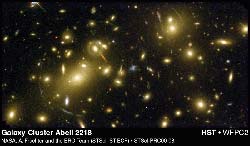New images, taken by the High Resolution Stereo Camera (HRSC) aboard ESA’s Mars Express spacecraft, show a large depression called Iani Chaos and the upper reaches of a large outflow channel called Ares Vallis.
To see images go to: www.esa.int/SPECIALS/Mars_Express/SEMIKO0DU8E_0.html
Image strips were taken in October 2004, during three orbits from a 350-kilometre altitude, with a
From the P&O Cruise Ferry, the Pride Of Bilbao, The Biscay Dolphin Research Programme (BDRP) has gathered a great deal of data on the distribution and abundance of whales & dolphins (collectively known as cetaceans). This wealth of data has demonstrated the importance of this area as a feeding and breeding ground for many different species with more than a quarter of all cetacean species being recorded in the area.
On a recent crossing of the Bay of Biscay in April 2005, Clive Ma
Opening Europe’s inland waterways to a new generation of travellers is a new system for the tourism sector. Due to undergo a test demonstration at the end of May, it will provide up-to-date, location-based information on everything from good restaurants to nearby emergency services.
Developed under the EurEauWeb IST project combines mobile communications, location sensing and detailed information and, if successful, could become the platform of choice for hundreds of other g
Scientists have for the first time mapped multiple complex biological interactions in a yeast cell in a simple graphical form, enhancing our understanding of how the networks of interaction by which components of a cell influence one another. New research published in the Open Access journal Journal of Biology shows that such maps can also reveal cryptic interactions and enable accurate predictions about interactions that haven’t been observed experimentally.
A living cell contains

Fifty years after his death, Albert Einstein’s work still provides new tools for understanding our universe. An international team of astronomers has now used a phenomenon first predicted by Einstein in 1936, called gravitational lensing, to determine the shape of stars. This phenomenon, due to the effect of gravity on light rays, led to the development of gravitational optics techniques, among them gravitational microlensing. It is the first time that this well-known technique has b
Type Ic supernovae, or hypernovae, may be source of powerful bursts
Observations by two of the world’s largest telescopes provide strong evidence that a peculiar type of exploding star may be the origin of elusive gamma-ray bursts that have puzzled scientists for more than 30 years.
A team of astronomers from Italy, Japan, Germany and the United States, including the University of California, Berkeley, conclude from observations with the Keck and Subaru telescopes in H